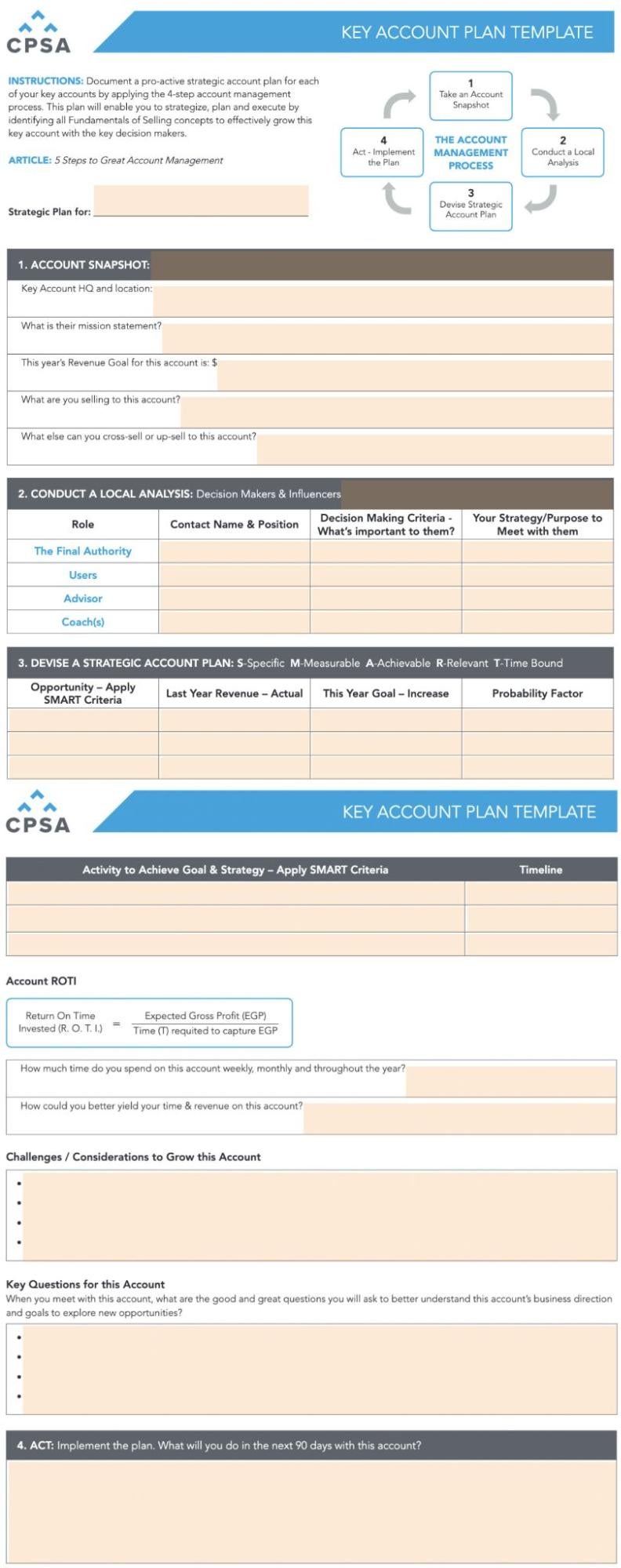A complete guide to strategic account management

Not all accounts are created equal. Chances are a small proportion of your buyer accounts make up the bulk of your company’s revenue.
Based on the value of these accounts, it makes sense to treat them with a high degree of care and even allocate dedicated resources to maintain them.
So how can you identify what these key accounts are? How can you add value and generate more revenue from these existing accounts?
This is where strategic account management comes in.
In this article, we’ll explain what strategic account management is and how it can grow your bottom line. We’ll also cover how you can implement a strategy and best practices to follow.
What is strategic account management?
Strategic account management is the process of identifying and building mutually beneficial relationships with your most important accounts. It allows you to foster customer loyalty, increase profitability, and deepen existing relationships.
Why is a strategic account management process important?
A deal doesn’t end once a buyer signs on the dotted line. You need to take a more proactive approach to maintain and grow existing accounts.
Here’s why dedicating resources to strategic account management is worth the investment:
Increases customer retention rates
Buyers today have more choices than ever. If your solution fails to address their pain points, they won’t hesitate to switch to an alternative.
You can increase customer satisfaction and improve retention rates by understanding your buyers’ needs and providing the resources they need to achieve their goals.
Every buyer has different reasons for choosing your solution, so you can’t take a one-size-fits-all approach. You’ll need to uncover your buyers’ pain points and present personalized solutions that align with their objectives. We’ll look at how you can conduct a needs assessment later.
Leads to more growth opportunities
Most businesses are obsessed with acquiring new buyers, and for good reason — sales to bring in revenue.
But if you’re neglecting existing accounts, you could be missing out on huge opportunities to generate revenue for your company. An account with high growth potential could turn into one of your biggest buyers (or even valued partners).
For example, let’s say a buyer signs up for a starter plan. However, as their business grows, they discover the plan no longer fits their needs. By working closely with this account, you can identify cross-sell and upsell opportunities — generating more revenue.
Delivers valuable insights
As you nurture relationships with strategic accounts, you’ll also understand how they’re using your solution to accomplish certain objectives. These insights can help your sales manager improve the company’s sales strategy.
In short, a successful strategic account management strategy can help you build mutually beneficial business relationships and grow your bottom line.
Now let’s break down the exact steps to make this strategy work for your sales organization.
How to implement a calculated account management strategy
A successful account management strategy isn’t something you can slap together in an afternoon. It’s an undertaking that requires careful planning.
Follow these steps to implement an account management strategy that works:
1. Identify your strategic accounts
Strategic accounts spend the most, right?
Not exactly.
Part of strategic account management involves identifying accounts that have the potential to grow into bigger ones — something that’s harder to achieve for more established accounts.
In fact, organizations that focus on customer spend when selecting key accounts are 51% less likely to see increased revenue.
So which accounts should you designate as strategic accounts?
Start by creating a list of criteria to help you narrow down the accounts to include in your strategic management strategy. Examples could include the following:
- Product fit
- Revenue potential
- Growth potential
- Financial health
- Potential partnership
Identify three to five criteria to prioritize. For example, if you want to expand into other markets, you might prioritize “potential partnership” over “product fit.”
Next, assign each account a score from 1 to 10 in each category. The accounts with the highest scores should be your strategic accounts. Work with senior management to ensure the accounts you’ve selected align with the organization’s strategic goals.
2. Assign dedicated account managers
Once you’ve identified the accounts with the most growth potential, the next step is to assign dedicated strategic account managers to them.
But proceed with caution here.
Some companies make the mistake of assigning salespeople to key accounts. However, selling and managing an account are different roles with distinct skill sets.
You’ll need an account management team whose sole purpose is not to close deals but to manage strategic accounts. These individuals will operate separately from your sales professionals.
A strategic account manager’s responsibilities include the following:
- Providing ongoing support to assigned key accounts
- Conducting an in-depth needs assessment for each account
- Identifying how the company can support their objectives
- Handling inquiries and finding solutions for complex issues
- Monitoring performance metrics and reporting progress to stakeholders
The ideal strategic account manager is someone with strong relationship-building skills. They’re also creative problem solvers with great organizational skills.
Excellent interpersonal skills are another must. Strategic account managers need to collaborate with customer success and product teams to develop custom solutions and facilitate the onboarding process.
How many accounts should a strategic account manager have?
It depends.
For accounts with the most potential to help your company achieve a key objective (e.g., gaining referrals in new markets), you might dedicate one manager to that account. Alternatively, you may also assign multiple accounts with moderate growth potential to one account manager.
There’s no hard and fast rule here. Of course, you don’t want to overextend your managers either by assigning them too many accounts.
3. Build a comprehensive profile for each account
The next step is to develop an in-depth profile for each strategic account. This will enable your strategic account managers to find ways to deliver value.
Answer the following questions for each account:
- What are their target markets?
- What products or services do they offer?
- Who are their main competitors?
- Who are the key decision-makers?
- What are their short- and long-term goals?
The aim here is to create a comprehensive profile for each account. But don’t stop at these questions. Conducting a SWOT analysis will help you gain a deeper understanding of these accounts and their business.
SWOT stands for:
- Strengths: What are the company’s strengths? What areas in their industry do they excel in?
- Weaknesses: In what areas is the company lacking? Maybe a competitor is beating them in certain markets or has features they don’t offer.
- Opportunities: What are some opportunities for the company? Maybe there are untapped markets that they could serve.
- Threats: What are some threats that could affect the account’s growth? Examples include emerging competitors or changing regulations.
A SWOT analysis will help the account manager determine which initiatives to prioritize. Use resources like LinkedIn, Crunchbase, and the company’s website to research your key accounts.
4. Conduct a needs assessment for each account
Now that you’ve identified your key accounts and created profiles for each, the next step is to identify the “gaps” between their current states and desired outcomes. This will enable you to create an account management plan to help close those gaps.
For example, let’s say an account is struggling with inaccurate data. Conducting a needs assessment can help you understand where gaps in that account’s data collection process exist.
Maybe they’re still relying on manual data entry for certain processes, which leads to more mistakes and errors in their data. With this information in hand, you can formulate a plan to fix these issues and even identify potential upsell opportunities.
5. Draft an account management plan
Once you conduct a needs assessment, you can start drafting a strategic plan. This provides strategic account managers with a “roadmap” for how they’ll help certain accounts grow.
An account management plan should include the following:
- Account snapshot: Gather basic information about the account. What is their mission statement? What are your revenue goals for the account? Are there any cross-sell or upsell opportunities?
- Internal decision-makers: For your efforts to be successful, you’ll need buy-in from the right people. Identify the internal stakeholders for each strategic account and determine their decision-making criteria.
- Personalized recommendations: How will you help an account grow? Look through your needs assessment to determine which initiatives to propose. Examples include suggesting partnerships or developing a personalized training program for their team.
- Resource requirements: How much time and how many resources will you dedicate to the account? Who will be responsible for managing the account?
- Challenges: Are there any challenges or considerations for growing the account? Note them so you can address them if and when they arise.
This is a lot to keep track of.
Here’s a template to help you put together an account management plan:
Enlist your salespeople to help you with the account planning process.
Then, review and share the strategic plan with the target account. This will help you set expectations from the start and avoid unwanted surprises. It will also send a clear signal that your company is invested in the account’s success.
6. Create a communication schedule
Set a schedule for ongoing communication with your strategic accounts. You may decide on weekly or monthly check-ins, but consider more frequent touch points if the plan calls for it.
Create a brief outline of what you’ll cover each time, and review the account’s progress. Have they implemented any of your personalized recommendations? Did they encounter any setbacks? Be sure to allow time for your buyers to share their thoughts and provide feedback.
Finally, make sure your buyers know what resources are available to them and how you can help. While this may sound obvious, 16% of strategic account managers say they are fully utilizing dedicated resources for their key account management. If an account isn’t using certain resources, you can allocate those resources elsewhere.
7. Track and measure success
Implementing a strategic account management strategy is a huge investment. It’s important to measure the right KPIs to determine your efforts’ impact on key business objectives.
Some metrics to help you measure success include the following:
- New sales
- Cross-sells and upsells
- Client referrals
- Account testimonials
- Satisfaction rates
Tracking relevant metrics can help you determine whether a customer relationship is mutually beneficial. If it isn’t, you can either scale back your investment or reconsider certain client relationships entirely.
8. Create executive alignment
You have lofty goals for your strategic accounts. But unless you get buy-in at the executive level, your initiatives will likely fail to gain any traction.
Set up account executives on both sides to agree on the next steps. Establish a business case for your initiatives and describe your strategy in detail. Outline how you’ll measure success and demonstrate ROI to get key decision-makers on board.
Take your strategic account management strategy to the next level with Gong
Strategic account management is a highly involved process. Keeping track of all the moving parts and following account management best practices makes it easy for key insights to slip through the cracks.
That’s where Gong comes in.
Gong’s customer success software records and transcribes all buyer interactions across phone calls, emails, and web conferencing. Strategic account managers can gain full visibility into a key account to ensure a smooth handoff from your sales team.
Request a demo today to see how Gong can help you implement a successful strategic account management strategy for your key customer accounts.






